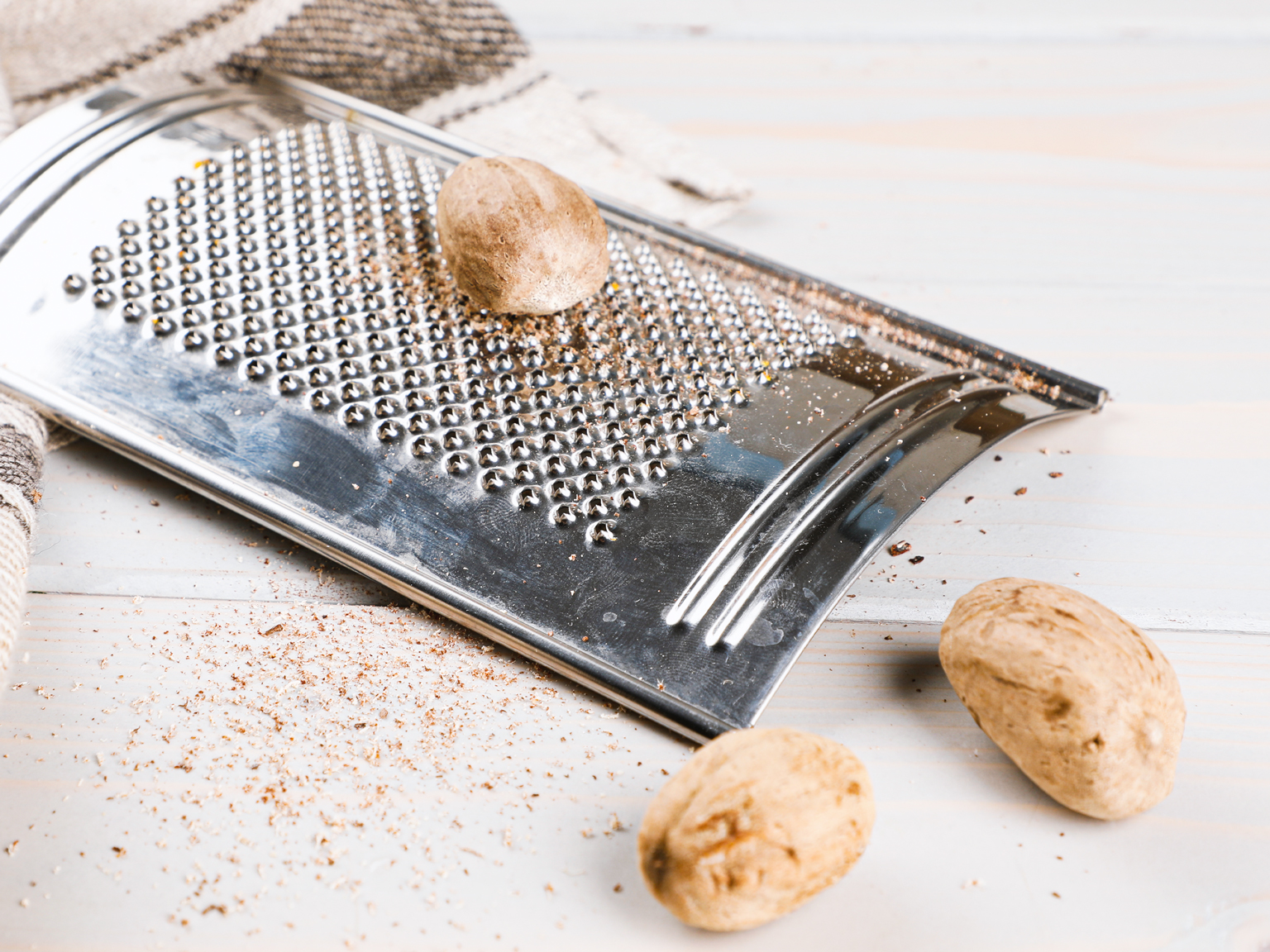Nutmeg is a very, very important spice both in the history of colonization and in the kitchen. In fact, it’s starting not as a spice but as a whole fruit on the nutmeg tree. It resembles a medium yellow plum, but chances are, that you’ve never ever seen a nutmeg fruit before because they are cultivated mostly for their seeds. But in some parts of Indonesia, in Sulawesi for instance, you can expect to see the sugared, dried in the sun, and partially fermented fruits. They are translucent but tinted with brownish colour from the palm sugar. People often call them pala manis and eat them as a snack or at the end of the meal.
When the fruit is cut open, the seed shielded by red lacy covering is revealed. That cover is called arillus and when it’s collected, dried and ground, it becomes a spice known as mace. And historically, mace was even more common in cooking. It was always valued less than the nutmeg due to the lack of potent flavour, though it’s still quite sweet and woody, with pungent notes, like a mix of pepper and cinnamon. Nowadays it’s commonly used in spice blends prepared for fish, meat and poultry, baked goods, soups and sauces. It’s preferred for the light yellowish hue it imparts during cooking.
When the arillus is removed, we’re left with the seed covered with another layer – a seed coat. When left out in the sun for 6 to 8 weeks, the nutmeg seed shrinks inside this coat and it becomes easy to break the latter with a wooden club to finally release a nutmeg – a greyish egg-shaped seed looking like a truffle when cut in half. Ground or grated, nutmeg has always been used in different cuisines. Its history is remarkable. The Arabs traded it, the Germans traded it, the Portuguese, the Dutch, the English – all sought ways to carve out their own piece of the pie, colonizing distant lands. Today we don’t think of it as of something special, but nutmeg, among other spices, truly has shaped the world. In Indonesia, at home, nutmeg is used in many different spicy soups and stews. In India nutmeg is smoked sometimes, and may be added to garam masala in small quantities. In Europe nutmeg is added to baked goods (pumpkin pies and nutmeg cakes, you know), meatloaves, and traditional Christmas drinks, like mulled wine and eggnog.
Speaking of which, if you ever thought of making a great present to one of your familiar bartenders, try to get a nutmeg grater – a-not-very-necessary-but-cool device that looks like a jewelry/powder box that can freshly grate nutmeg. Yes, there are far more boring varieties that looks like regular graters, but nobody wants that, try to find the fanciest one. Present it and from that day forward your holiday hot toddies will be the best in town.











What do you think?